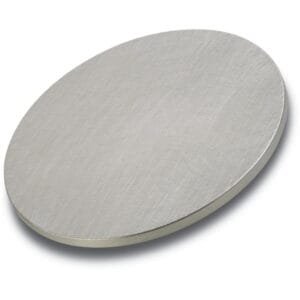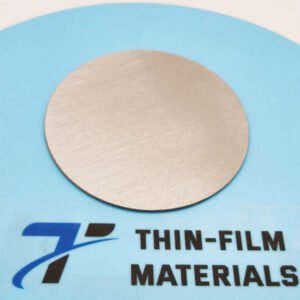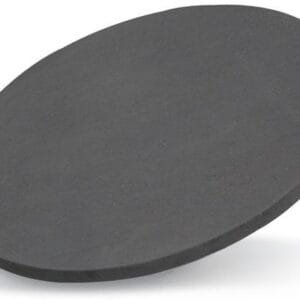Niobium Stannide Sputtering Target Description
The Niobium Stannide Sputtering Target is used to create thin films or coatings composed of a niobium (Nb) and tin (Sn) compound in a 3:1 ratio. This target is widely utilized in physical vapor deposition (PVD) techniques to deposit thin films onto various substrates.
The Nb₃Sn compound is a superconducting material with a high critical temperature of around 18 K. Its exceptional superconducting properties make it well-suited for applications in superconducting magnets, high-energy particle accelerators, and other advanced electronic devices.
Niobium Stannide Sputtering Target Specifications
| Compound Formula | Nb3Sn |
| Appearance | Dark gray target |
| Molecular Weight | 397.43 |
| Density | 5.7 g/cm3 |
| Available Sizes | Dia.: 1.0″, 2.0″, 3.0″, 4.0″, 5.0″, 6.0″ Thick: 0.125″, 0.250″ |
Niobium Stannide Sputtering Target Handling Notes
Indium bonding is recommended for the Niobium Stannide Sputtering Target due to its properties that can complicate sputtering, such as brittleness and low thermal conductivity. The target’s low thermal conductivity makes it prone to thermal shock, so indium bonding helps enhance its performance and stability during the sputtering process.
Niobium Stannide Sputtering Target Application
The Niobium Stannide Sputtering Target is essential for various technological applications and research areas, particularly in the development of superconducting devices and advanced electronic systems.
Niobium Stannide Sputtering Target Packaging
We ensure that our Niobium Stannide Sputtering Targets are meticulously handled during storage and transportation to maintain their quality and preserve them in their original condition.





Reviews
There are no reviews yet.